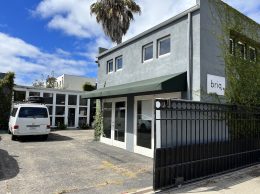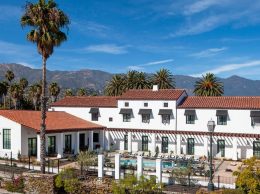Santa Barbara scrambles to regulate pot dispensaries
IN THIS ARTICLE
- Columns Topic
- pacbiztimes Author
By pacbiztimes Friday, November 27th, 2015
Ryan Howe left a stable gig in the entertainment industry to vie for a coveted spot in Santa Barbara’s medical marijuana dispensary market.
The former president of the Los Angeles-based production company Thunder Bay Pictures now aims to start one of three allowable dispensaries within city limits.
“It was a philosophical change in my life,” he said. “I really want to do something to help. My mother has been battling through cancer for 22 years and I’ve been with her every step of the way. We don’t even use chemo or radiation anymore. I’ve seen cannabis work.”
The city of Santa Barbara has to act before March 1, 2016 if it wants to maintain control over its dispensaries. Gov. Jerry Brown signed three laws in October that regulate the cultivation, transportation and sale of medical marijuana. They would not supersede local ordinances that municipalities craft prior to the deadline.
As the proposed ordinance is written now, the city will allow up to three dispensaries but no commercial cultivation. Only residents with a doctor’s letter could grow medical marijuana in their homes.
There are up to 25,000 medical marijuana patients in the South County, Howe said, but it will be important not to grow too fast.
“We have to be very careful in terms of the kind of patients that we treat,” he said. “We have to balance our membership base so it doesn’t get too large and be able to serve the needs of our members.”
The Architectural Board of Review recently approved Howe’s proposal for 118 N. Milpas St. and it’s headed to the staff hearing officer. The city approved the dispensary at 3627 State St. in June.
But staff recently criticized the application for 2609 De la Vina St., in part, because it seems to be structured like a for-profit model.
“Our licenses in Santa Barbara are going to be very valuable,” said Joe Allen, a longtime Santa Barbara lawyer and cancer survivor who looks to open the dispensary on Upper State Street next year. “Those are going to be valuable properties.”
Most of the dispensaries in the region were shut down in 2012 when federal authorities dropped the hammer. Even those that abided by local ordinances and state law were closed and forced underground.
The Obama administration and a bill provision that dissuaded spending federal funds on law-abiding dispensaries changed the landscape dramatically, Allen said.
“It meant that we had much less trouble getting at least a few landlords to make us an offer in SB because it effectively eliminates the danger of land forfeiture by the federal government,” said Allen, adding that some of his clients are converting their greenhouses to cultivate medical marijuana.
“It’s a higher profit model than tulips,” he said.
Howe described Santa Barbara and its hospitals, wellness centers and holistic medicine as a medical mecca.
“I’ve looked all over Southern California. This is one of the best places to be,” said Howe, adding that a lot of cities don’t have medical marijuana ordinances. “They have one of the best ordinances written, they know what they’re doing — you just have to follow the law.”
Allen said he doesn’t think three dispensaries will drastically impact the economy, but that would change if more dispensaries open up in the region and throughout the state.
“Three dispensaries will produce a significant kick to city, county and state tax coffers,” Allen said. “If more open throughout the (tri-county) region, we’re talking millions in tax revenue a year.”
Santa Ynez winery for sale
Zaca Mesa Winery & Vineyards is on the market for $32 million.
The 750-acre Santa Ynez Valley property at 6905 Foxen Canyon Road, known for its Rhone varietals, has been an incubator for some of the area’s most prominent winemakers for more than three decades.
Majority owner John Cushman says he doesn’t have time to oversee the property due to increased responsibilities in his real estate business, Cushman & Wakefield.
The ranch has a 24,000-square-foot production facility and tasting room, and approximately 150 acres of vineyards. Although the winery is currently producing about 40,000 cases annually, it can handle up to 100,000.
Several winemakers in the region said they are surprised that the announcement has been made publicly like this. E.&J. Gallo Winery’s purchase of Talbott Vineyards in Monterey County was only announced after its sale in August.
Zaca Mesa’s size could make it a tough sell, sources said.
• Contact Alex Kacik at [email protected].













